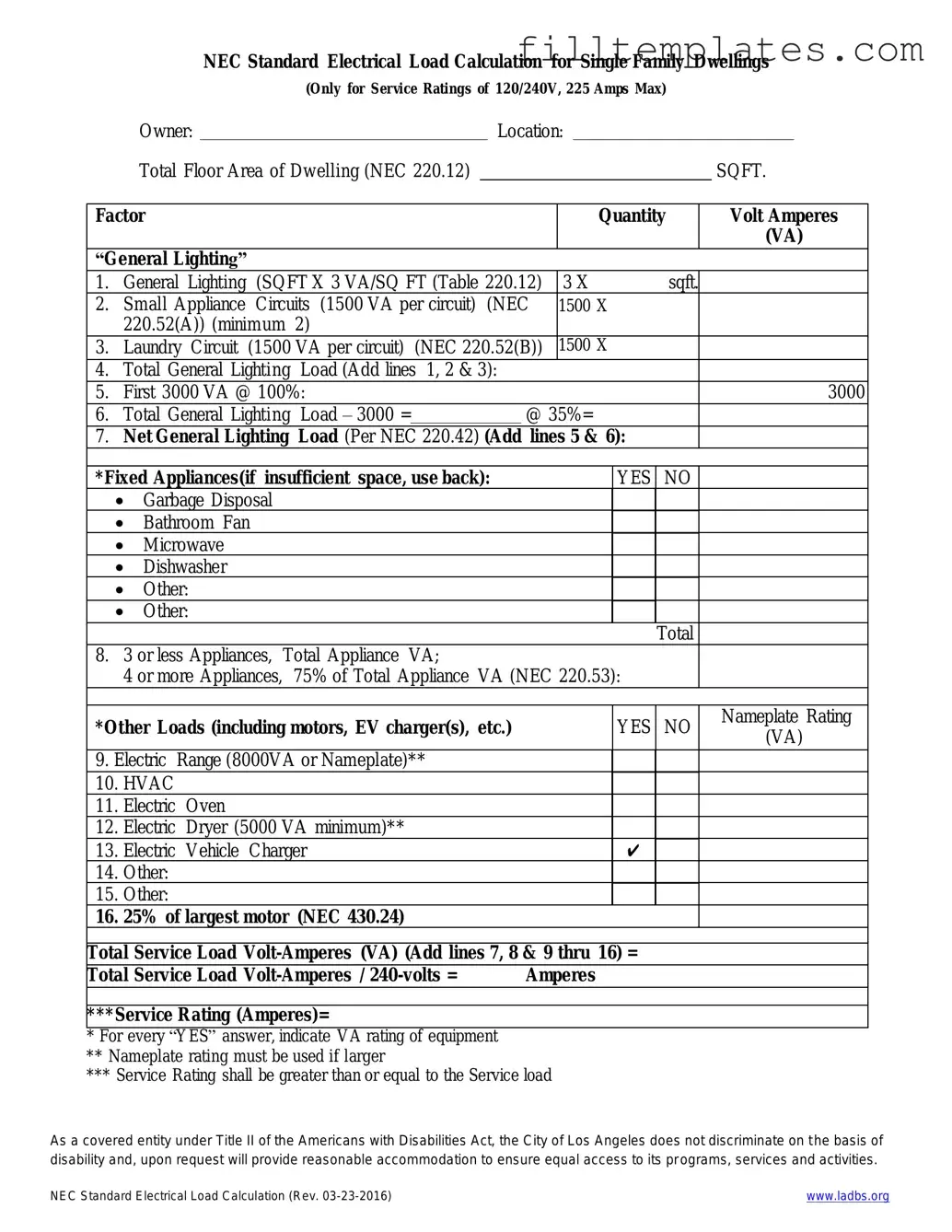Download LADBS NEC Standard Electrical Load Calculation Template
The LADBS NEC Standard Electrical Load Calculation form is a crucial document used to determine the electrical load requirements for various types of buildings and installations. By accurately assessing the anticipated electrical demand, this form helps ensure safety and compliance with local regulations. Understanding how to properly fill out this form is essential for contractors and property owners alike.
Open LADBS NEC Standard Electrical Load Calculation Editor

